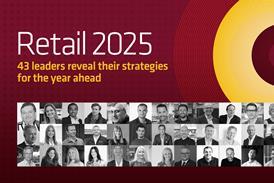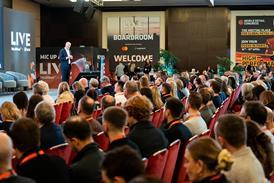Hermes managing director Martijn De Lange looks at the styles of leadership generating new ideas in the workplace.
Earlier this month I came across a fascinating article in Forbes magazine written by one of the professors from the Rotterdam School of Management (RSM), Erasmus University, about leadership styles.
This was the very institution where I earned my master’s degree and I spent 10 years living in this beautiful city. The school has undertaken some research that suggests it is possible to divide most workplace leaders into two distinct types – ‘transactional’ and ‘transformational’.
As I am just starting my new role at Hermes as managing director, I was interested to read which category, if either, I might fall into.
Transactional v transformational
The article described transactional leaders as those who tend to work in a straightforward and rather old-fashioned way. They set goals for their people and then they seek to motivate them to achieve those goals through traditional, tried-and-tested methods, such as promotions, pay rises, bonuses and other tangible perks.
Transformational leaders on the other hand are altogether more ‘new age’ in their approach. They articulate and share a vision of the future, building a picture that everyone can buy into. They aim to act as role models for desired behaviours and they mentor and support their people in both their personal and professional development.
“The research found that workers with a more transactional leader generated around 14% more ideas than those who were led by someone with transformational tendencies”
Martijn De Lange, Hermes
The main point of the research was to look at which is the most successful style of leadership when it comes to getting employees to come up with those all-important new ideas. Interestingly the research found that workers with a more transactional leader generated around 14% more ideas than those who were led by someone with transformational tendencies.
To be honest this surprised me a little as, while both approaches have their merits, I believe that the old ‘command and control’ style of management is a little outdated and that it is important to lead in a much more engaging and supportive way and create the right environment for innovation.
However, I also understand that the motivation for many people is the promise of a better job and the ability to earn more money.
Millennial generation
There are of course other motivational factors to consider, especially for the highly influential millennial generation, which it is estimated will form 75% of the workforce by 2030.
“Millennials prefer to work in an environment in which personal awareness, collective consciousness and empathy for others are placed at the centre of business communication”
Martijn De Lange
The Deloitte Millennial Study of 2016 found that personal values have the greatest influence on millennials’ decision-making and motivation.
This generation does not respond well to traditional leadership approaches, which may involve barking instructions at and giving orders to others.
The study found that they prefer to work in an environment in which personal awareness, collective consciousness and empathy for others are placed at the centre of business communication. They believe that this creates an environment where everyone has an opportunity to thrive.
In conclusion, I believe that while different people are motivated by different things, a good leader can understand that and adapt the business environment accordingly. After all, a great leader isn’t just someone who leads but someone that other people want to follow.

































No comments yet